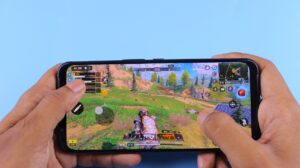Influencer marketing has been gathering momentum for quite some time now and has proven to be a rich source of content creation and distribution.
However, influencer marketing isn’t a sure-proof success in all the cases. It comes with its fair share of risks as well. There are plenty of things to consider before handing over your marketing campaign to an external influencer, and not doing ample research beforehand can backfire severely.
So how to ensure that an influencer marketing campaign will kill it?
Below are some top influencer marketing examples that can inspire your social media strategy.
DeeMuesli and the Little Plantation
DeeMuesli is a UK-based small business that sells muesli as its primary product, and nothing else. However, this hasn’t stopped them from making use of local influencers in enhancing their brand awareness.
The startup collaborated with Kimberly Espinel, a popular British vegan influencer. All Kimberly did was post an original recipe alongside delectable pictures via her Instagram account, The Little Plantation, with DeeMuesli as a major ingredient.
Understandably, DeeMuesli could have collaborated with health bloggers or professional nutritionists to simply market the health benefits of muesli, but the conventional approach might not have worked.
Remember, influencer marketing isn’t about putting your products under the limelight, but allowing influencers the liberty to do what they do best and to then enjoy the product success.
Lyft’s huge number of influencers
Lyft is a direct competitor to Uber with a broad audience base, and so it was quite difficult for the company to choose the right type of influencers.
Rather than working with few, select influencers, as most organizations do, Lyft went bold and partnered with more than 1,000 influencers from around the globe, ranging from popular celebrities to some exclusive regional names.
Their idea was to spread the message that everyone, who’s anyone, is using Lyft. Apparently, this strategy did wonders and the ride sharing business became the most talked about brand in 2018, registering up to 6 million engagements.
It might be easy to say that Lyft just called in a large number of influencers, but it actually took a calculated approach for expected engagement.
Consider the example of Snoop Dogg. The media artist has acquired a staggering 33 million followers,
But trying to engage people for a ride sharing app would have been difficult even for him so the company put in a discount code to catch the attention of his followers.
Walmart’s fight with hunger
The multinational retail giant isn’t concerned about falling revenues, but is about its reputation with younger age groups who wish to purchase whatever they want online. So, the company wanted to change their image and enhance awareness, especially with people under 29 who constitute over 70% of their total target audience.
Walmart launched the #FightHunger campaign by teaming up with people to contribute back to their communities. The company promised to give away 10 meals for every engaged user that mentioned the campaign as an act of support.
They collaborated with influencers like chef Ana Quincoces and other users to post their own content. The move resulted in 89k engagements in 1 month, while Walmart provided over 1 billion meals.
Walmart took a serious risk by allowing users to post their own original content which could have resulted in the retail company being trolled. The trick was to use relevant influencers belonging to the food niche and control the content and posts narrative.
Once the direction got set, the campaign gathered momentum with more and more normal users becoming strong influencers, posting their support under the #FightHunger cause.
Canon goes undercover
The technological advancements of mobile phone cameras and social media platforms came as a threat to Canon. Rather than retaliating, the company patiently accepted the paradigm shift, but started highlighting various amateur bloggers and photographers who used DLSR cameras to outshine their Instagram pictures in the news feed.
Now with 720p to 1080p cameras in our pockets, Canon decided to leave out the amateur users and opt for hardcore photography lovers.
Canon moved on to associate with micro and mid-ranged photographers, alongside bloggers who mainly relied on visual content to increase their follower base. In doing so, Canon was able to reach its intended target audience and refine its brand image.
Seemingly, top-notch pictures go viral on Instagram. Unsurprisingly, Canon managed to acquire about 3 million engagements in 2018.
Canon never felt the need to convince the world that their cameras were good. They just wanted to see the hashtag, #canonusa, in the description of every quality image uploaded on Instagram. However, doing so would require more than a couple of sponsored posts from influencers, or, a long-term relationship with the influencers.
As a result, Canon built a long-term relationship and serious commitment with the right type of photographers and content creators, while using Instagram as a powerful promotional machine in the process.
Adidas She Breaks Barriers
After examining Nike’s unbeatable influencer marketing campaigns ruling the global athletic wear and apparel industry, Adidas decided to get into the game by launching the “She Breaks Barrier” campaign!
The campaign’s intent was to draw girls into sports and empower them mentally. For instance, the campaign features stories from popular female athletes like WNBA star Layshia Clarendon and marathoner Rahaf Khatib.
The campaign talks about the barriers that girls often encounter which prevent them from entering physically demanding sports and encourages them to get out of their comfort zone and liberate themselves.
By using popular female figures (as stated above) in She Breaks Barrier, Adidas acquired a massive follower base in the athlete industry.
Glossier expresses your stories
Beauty influencers can be found around every corner on social media today, particularly Instagram which has made it increasingly difficult for companies like Glossier to stand out with a separate, loyal audience base.
Rather than selecting a few random influencers, Glossier opted to transform their Instagram account into an aggressive marketing chain by changing all their users into influencers.
They encouraged all the women to post by interacting with them regularly. Their typical users became influencers by not only posting stories and pictures on regular basis, but also because Glossier produced stories from user provided data. Glossier’s stories grab around 10 million views each month.
It might seem tedious and time-consuming, but the effort surely paid off. Glossier dedicated a separate team for interacting, reposting, and creating stories based on their users’ data, and shaped its page into a close-knit group that promised and rewarded loyalty endeavors.
In other words, thousands of users were incentivized by creating original content for Glossier. As the ultimate move, the company rearranged and reposted its users’ own content by rewarding followers through interaction and also got to protect its brand image in a highly saturated market.





